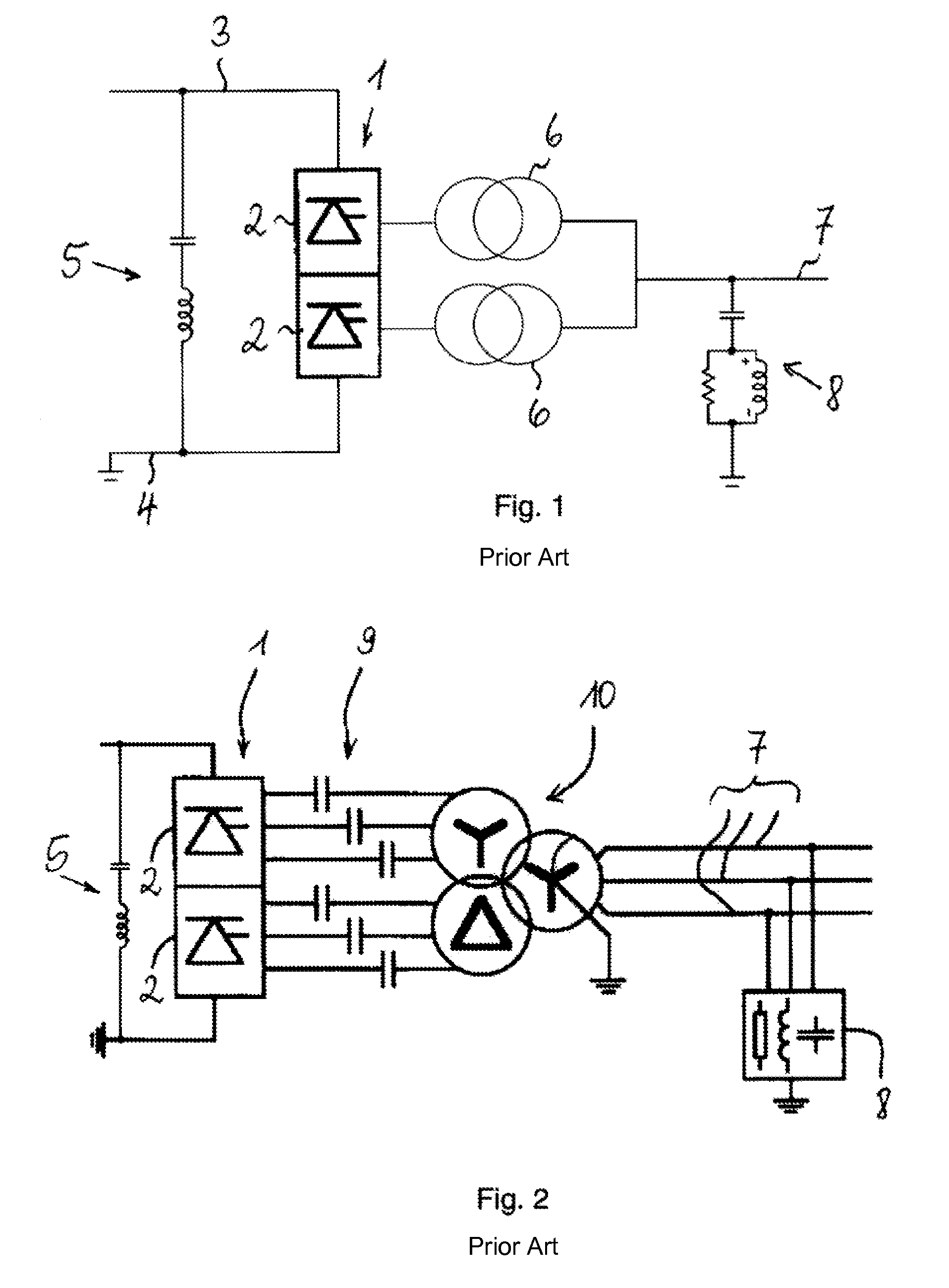Voltage source converter for high voltage direct current power transmission
a technology of voltage source converter and high voltage direct current, which is applied in the direction of power conversion system, electric power transfer ac network, electrical apparatus, etc., can solve the problems of increasing costs and further cost factors, and achieve the effect of reducing costs
- Summary
- Abstract
- Description
- Claims
- Application Information
AI Technical Summary
Benefits of technology
Problems solved by technology
Method used
Image
Examples
first embodiment
[0025]FIG. 5 shows a power conversion system with a multi-level
[0026]VSC, in this case a VSC 47 with two series-connected converter valve bridges 31, where the system represents a considerable improvement compared to the system of FIG. 4. The major difference between the two systems lies in that the system of FIG. 5 comprises a capacitor 34 in series with each of the converter reactors 33. The capacitors 34 block the DC voltages which occur at the AC phase terminals 32 of the bridges 31 from passing to the transformers 45, so that standard transformers can be used. Zero DC voltage can be measured again at the midpoint 46 between the two bridges 31, and it is again possible to connect midpoint 46 directly to ground. Alternatively, it is also possible to operate VSC 47 in a way where one of the poles 49 or 50 is connected to ground and the other to a positive or negative DC voltage. This would result in different DC voltage levels on the AC phase terminals 32 than in the embodiment of...
second embodiment
[0027]In a power conversion system with a multi-level VSC 47 and series capacitors 34, according to FIG. 6, a shunt-connected harmonic filter 35 is introduced. Due to the presence of the series capacitors 34, it is sufficient to have just one harmonic filter 35 to filter out the remaining high frequency components. The possible combination of the harmonic filters into just one filter results directly in the combination of the transformer 45 into one transformer 36. As is seen in FIG. 6, this reduction in components leads to a configuration, where the two series connections of converter reactor 33 and capacitor 34 are connected in parallel with each other and where the one transformer 36 and the one shunt-connect harmonic filter 35 are directly coupled to the common connection point 40 of the series connections. FIG. 6 shows additionally two surge arresters 43, each connected across one of the capacitors 34, which protect the capacitors 34 against overvoltage.
third embodiment
[0028]a power conversion system with a multi-level VSC 48 and series capacitors 34 is shown in FIG. 7. The VSC 48 comprises four series-connected converter valve bridges 31. All components which were already introduced with respect to FIG. 5 or 6 are marked with the same reference numbers. One series connection of converter reactor 33 and capacitor 34 is again connected to each of the AC phase terminals of the four bridges. The four series connections are all connected in parallel with each other and one harmonic filter 35 and one transformer 36 are coupled to the common connection point 41 via an additional reactor 38. The additional reactor 38 allows the reduction of converter reactors 33 in size, which results in a further cost reduction, especially with an increasing number of series connected bridges 31.
PUM
 Login to View More
Login to View More Abstract
Description
Claims
Application Information
 Login to View More
Login to View More - R&D
- Intellectual Property
- Life Sciences
- Materials
- Tech Scout
- Unparalleled Data Quality
- Higher Quality Content
- 60% Fewer Hallucinations
Browse by: Latest US Patents, China's latest patents, Technical Efficacy Thesaurus, Application Domain, Technology Topic, Popular Technical Reports.
© 2025 PatSnap. All rights reserved.Legal|Privacy policy|Modern Slavery Act Transparency Statement|Sitemap|About US| Contact US: help@patsnap.com



